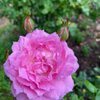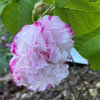Final Farewell to Catipillars??? & Aphids
CapeHeart
19 years ago
Here in MA we have had an over load of catipillars - the tiny green ones that fly down from the trees from webs (rains green worms), the larger crunchy circle ones and the grey/black/red furry ones.
I know it has to be them eating the leafs of our roses as I find the furry ones on them. Some are like lace and others are half eaten leafs. There are no JBs insight.
Please tell me how I can get rid of them and quick!
Oh I was using flour for aphids- first blasting them then using the flour but they are back. UGH!!! How can I get rid of them and keep them away too! Aphids appear only on the buds.
What are good preventive measures to keep "bad" insects away!?
Many thanks
Chantel :-)





Kimmsr
michaelg
Related Professionals
Allentown Landscape Architects & Landscape Designers · Deer Park Landscape Architects & Landscape Designers · Tomball Landscape Architects & Landscape Designers · Edmond Landscape Contractors · Dallas Landscape Contractors · El Segundo Landscape Contractors · Federal Way Landscape Contractors · Hayden Landscape Contractors · Holland Landscape Contractors · Pleasant Grove Landscape Contractors · Pomona Landscape Contractors · Vallejo Landscape Contractors · Wilsonville Landscape Contractors · New Carrollton Landscape Contractors · Hueytown Landscape Contractorstulipsmiles
Kimmsr
Lalala (zone 6b)
Kimmsr
rhizo_1 (North AL) zone 7